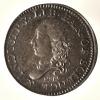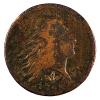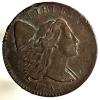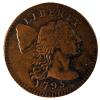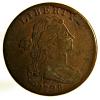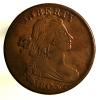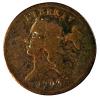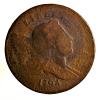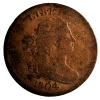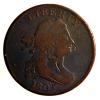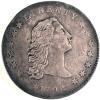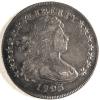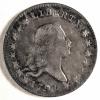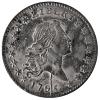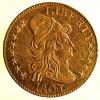You are here
The New Federal Coinage
After the legislation to establish a national mint in Philadelphia was signed on April 2, 1792, it took the better part of a year to acquire the property (at Seventh and Filbert), appoint the directors, identify trained engravers, hire the workers, import or build the equipment, and acquire the bullion for minting. An initial issue of silver half dismes was struck outside the Mint in 1792; thereafter, copper cents and half cents were introduced in 1793, silver dollars and half dollars in 1794, silver quarters and dimes in 1796, gold eagles (ten dollars) and half eagles in 1795, and quarter eagles in 1796, all with some version of a female head as a representation of Liberty.
|
United States Mint. Letter from the Secretary of State, Enclosing the Reports of the Late and Present Director of the Mint … 14th December 1795. Philadelphia: Francis and Robert Bailey, 1795. Within three years of the beginning of minting in Philadelphia, the United States Mint had struck more than 11,500 gold coins, 614,350 silver coins, and 1,208,500 bronze coins, substantially relieving the shortage of circulating currency that had existed since early colonial days. |
|
John Adams (1735–1826). Autograph letter signed to Benjamin Rush, Quincy, Mass., January 18, 1811. In 1811 former president John Adams passed along to Rush (1746–1813; Class of 1760), his appointee as Treasurer of the Mint, a request from his son John Quincy Adams, the first American ambassador to Russia, to supply to a collector in St. Petersburg specimens of all of the denominations produced by the Mint. This request can be taken as an indication of the success of the United States in producing a coinage that became an exemplar to the modern world. |
The half disme (the use of the Old French spelling is traditional for this coin) is the only official issue struck under the Mint Act of 1792 to bear that date. It is believed to have been produced in the basement of a private home in Philadelphia, using bullion supplied by George Washington. The figure of Liberty, believed to have been inspired by Martha Washington, has free-flowing hair but no other identifying attributes. The Cass specimen was purchased in the auction held by Thomas Elder on April 27, 1917, where it was identified as the finest known specimen.
|
|
Because the striking of silver and gold coins had to await the acquisition of bullion, the first coins struck in the Mint were copper cents and half cents. The 1793 cents followed the half disme in presenting Liberty as a woman with freely flowing hair and no attributes. The pileus was added in 1794, but removed in 1796 in favor of a much more contemporary image of a draped bust of a woman, identifiable as Liberty only by the legend above her head.
|
|
|
|
|
|
|
|
The half cent followed the Libertas Americana medal in facing Liberty to the left, but her cap resembles the Phrygian hat more than the true pileus. The half cent was minted with the attributes of Liberty through 1797; after a three-year hiatus in minting, the denomination was reintroduced with the draped bust of the other denominations.
|
|
|
|
|
|
|
|
The minting of silver began in 1794 with dollars and half dollars. Liberty was portrayed as a woman with flowing hair and no identifying attributes. As on the copper coinage, the image was replaced with the more contemporary draped bust in 1795, a portrayal carried onto the quarter and dime when these were introduced the following year.
|
|
|
|
|
|
|
|
On the gold coinage initiated in 1795, the female on the obverse does have a hat, an article somewhere between a pileus and a Phrygian cap, but it is perched on her head and bound up in a scarf in a manner with few precedents in ancient or European depictions of Liberty.
|
|
|
|
|
|



